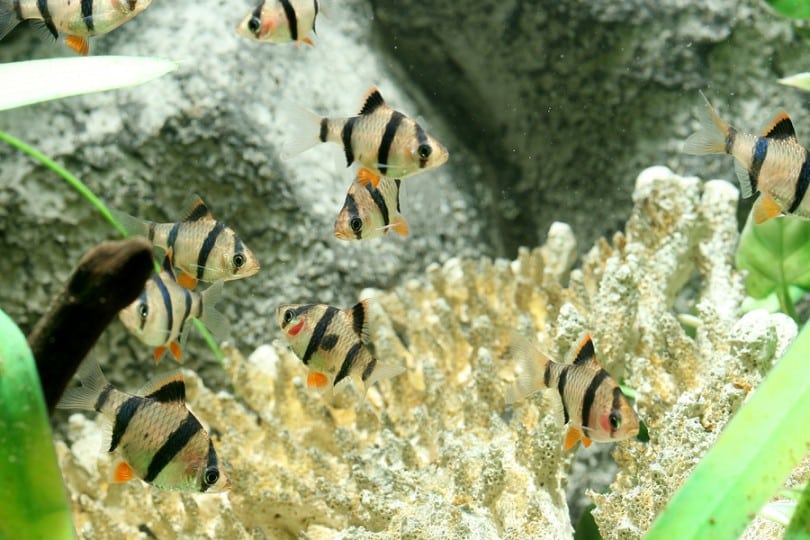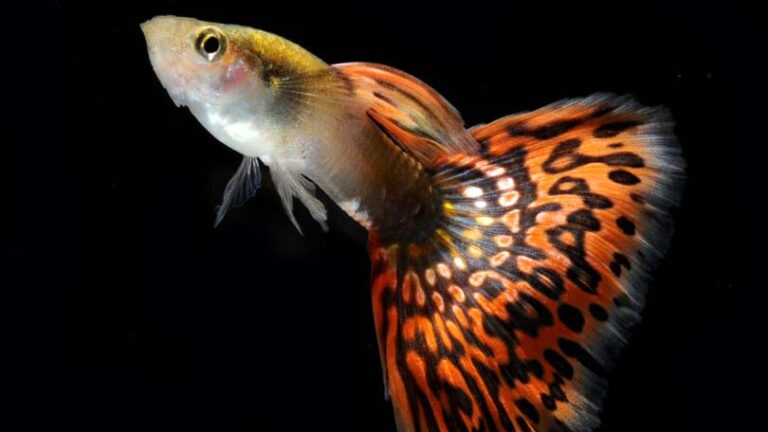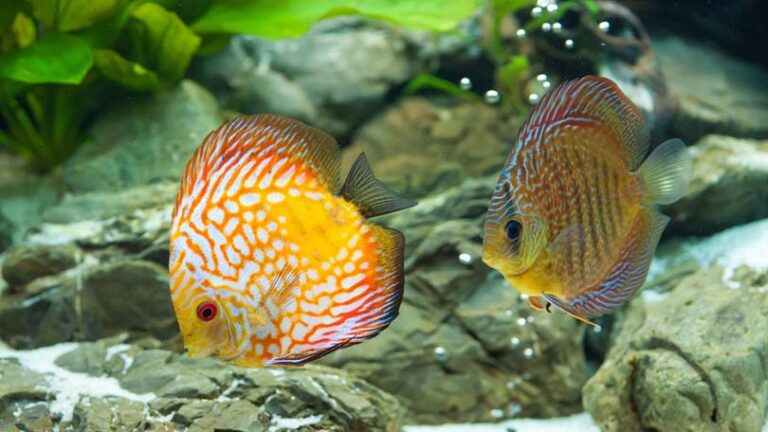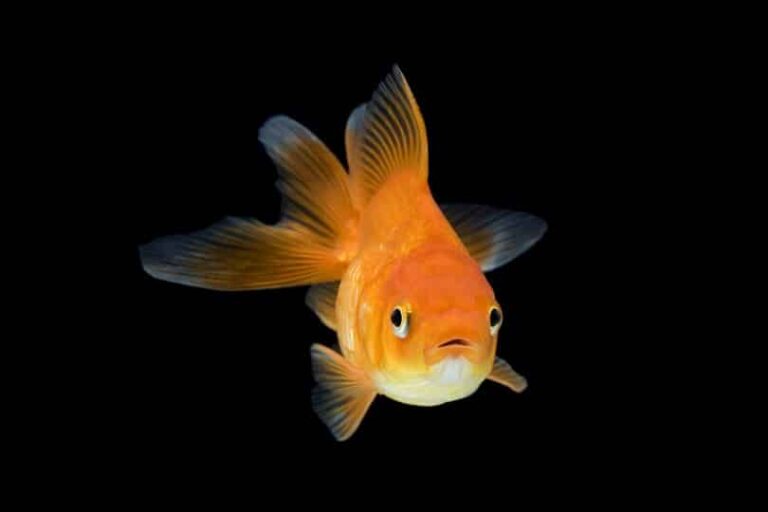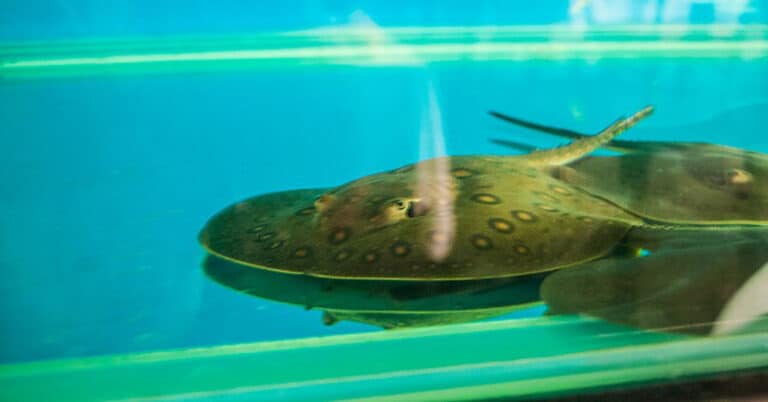Tiger Barb
Scientific classification
| Kingdom: | Animalia |
| Phylum: | Chordata |
| Class: | Actinopterygii |
| Order: | Cypriniformes |
| Family: | Cyprinidae |
| Genus: | Puntigrus |
| Species: | P. Tetrazona |
| Binomial name: | Puntigrus Tetrazona |
PuntigrusTtetrazona is otherwise known as Sumatra Barb or Tiger Barb. This type of fish, from the family Cyprinidae, hails from the tropical regions. According to reports received, the normal geographical series expands all over the Malay Peninsula, Borneo, and Sumatra, with reports of unproven findings in Cambodia. Besides these places, the Tiger Barb is also seen in several other regions of Asia, based on the undependable information gathered over time. Exact results regarding their geographical variety and natural history are not obtainable. There is a misconception between the Tiger Barb with Systomus Anchisporus, which look similar.

Habitat and Range
The origin of the Tiger Barb is the South-East parts of Asia; they are indigenous to Malaysia and Indonesia. They inhabit the Malay Peninsula, situated on the Sumatra Islands of Borneo and on the Sumatra islands. This freshwater Tiger Barb is a trendy aquarium fish; man has introduced them to several other places. There are instances of observing them in Singapore, Australia, Colombia and Suriname. As such, it is difficult to understand whether this freshwater Tiger Barbs found in small populations in many other Asian Countries are a result of native presence, or introduced by man.
Reports are available regarding the presence of the Tiger Barbs in the moderately flowing lakes and streams, where the water is shallow and clear. They thrive in the tropical climate, and prefer a water pH level of 6.0–8.0. They are found in water bodies having a hardness level of 5–19 dGH, and a temperature range between 77 and 82 °F.
Description
The Tiger Barb does not grow much when in custody; otherwise they grow to a length of almost 7 to 10 cm (2.75 to 4 in.) and width of 3 to 4 cm. (1.18 in.). There are incidences of some growing to lengths of 13 cm. Those found in the wild brownish yellow / silver in color, have a snout, red fins and 4 vertical black colored stripes. The nature and size of the Green Tiger Barb are the same as the ordinary barb, with the exception that its body is green in color. The green Tiger Barb, is mostly known as the moss Green Tiger Barb, to many it appears different in color,
Depending on the depth of the green, to a few, it appears almost black in color. The color of the Albino Barb is pale yellow, having 4 stripes with less clarity.
Growing at Home
Important in the Aquarium Trade
Out of the 70 Barb fish species, the Tiger Barb is one of the most important fish in the commercial world. In 1992, only 20 fish species accounted to more than 60% of the total ornamental fish species imported to the United States, out of which, the Tiger Barb species was the tenth most popular species with 2.6 million fishes imported. Due to the Tiger Barb’s amazing color combination, it has gained popularity among the fish hobbyists, and indirectly has led to the rise in its production since last two decades. The melanistic green colored Tiger Barb, Albino Tiger Barb and the Gold Tiger Barb are some of the examples of the colored morphs of the Tiger Barb species.
Breeding
Wild Tiger Barbs are quite fertile and this species double up in not more than15 months. The sexual maturity of the Tiger Barb is normally when it acquires a length of 2 to 3 cm. (0.8 to 1.2 in.), when the fish becomes as old as 7 weeks.
It is easy to sex Tiger Barbs, because the female Tiger Barb is bigger in size when compared to its male counterpart. Its belly is rounded. The nose of the male is conspicuous; on top of the black portion of its dorsal fin; you observe a remarkable red line, while that of the female is purely black.
In case you have plans to breed freshwater Tiger Barbs in your aquarium, the ideal way is having a shoal of them, giving them freedom in finding their own mates.
Tank
The suggested size of an aquarium is minimum 60 cm. (24 in.). While arranging your aquarium, make an attempt to simulate their wild habitat. Give the shoal sufficient space for swimming, and provision for them to hide. If at all possible, equip the aquarium with rocks, with enough plants and driftwood which they appreciate.
The Tiger Barb species is considered as a best shoaling fish, and is usually kept in a group of more than 6. They are popular for their fin nipping behavior; hence they are also known as fin nippers. If kept with less than 5 tank mates, they turn more aggressive and harm the other fishes. A pecking order is formed by semi-aggressive group, which is usually extended by them to the other species, and the new members continue the same fin nipping activity. Hence such types are not recommended in a tank with peaceful natured fish like Gouramis, Bettas and Angelfish. However, they are a good tank mate for the other species like Platys, Danios and Other Catfish. Usually, when they are in a tank having a large number of fish, they spend time by chasing and playing with their own group, and leave the other species alone. The most compatible species suitable for the Tiger Barb’s behavior are the Clown Loach. The Catfishes are middle dwellers in the water, and prefer slightly acidic conditions. They also thrive well in a densely vegetated habitat, so you can arrange around two third of their tanks with hardy plants. Their aggressive behavior can also be seen during the feeding time. They are very greedy and consume a lot of food. Omnivorous in nature, they love to eat all kinds of food like crisps, flakes, live as well as frozen foods. This species seems to be more susceptible to a bacterial infection, known as cottonmouth (columnaris).
Water Condition
Tiger Barbs seem to adjust to a dH from 5 to 19 and pH from 6.0 to 8.0. Tiger Barbs fare well in soft and mildly acidic water; hence a pH of 6.0 to 7.0 and dH not above 10 is the suggested level. When in captivity, a dH as low as 4 is occasionally maintained. Do your best in maintaining the temperature of the top portion, in the suggested range, which is 23 to 26oC (74 to 79oF)
Nutrition
Tiger Barbs agree to take almost all types of food, therefore provide them the same so that they sustain a healthy immunized structure. In the diet of your Tiger Barb, add a good variety of flake food and also frozen as well as live food, like blood worms, brine shrimp and beef heart. The Tiger Barb just gulps down the tiny marine invertebrate and also the vegetables that are cooked.
Hybrids
For developing a different range of colored Tiger Barbs, intra-specific and inter-specific hybridization methods are commonly used. Examples of commercially developed species are the Albino and Gold Barbs that are created from the Albino and recessive Xanthic genes.

Having discovered a fondness for insects while pursuing her degree in Biology, Randi Jones was quite bugged to know that people usually dismissed these little creatures as “creepy-crawlies”.

